![非线性物理科学:微分方程群性质理论讲义 [Lectures on the Theory of Group Properties of Differential Equations]](https://pic.windowsfront.com/11216143/57d9f413N697e1d30.jpg)

具体描述
内容简介
《非线性物理科学:微分方程群性质理论讲义》提供了确定和利用微分方程对称性的李群方法简明和清晰的介绍,并提供了在气体动力学和其他非线性模型中的大量应用,以及《非线性物理科学:微分方程群性质理论讲义》作者在这个经典领域的卓越贡献。《非线性物理科学:微分方程群性质理论讲义》中还包含在其他现代书籍中不曾涉及的一些非常有刚的材料,例如:Ovsyannikow教授发展的部分不变解理论,该理论提供了求解非线性微分方程和研究复杂数学模型强有力的工具。作者简介
L.V.Ovsyannikov,教授是20世纪60年代促进恢复微分方程群分析研究的领军科学家。他在不变解和部分不变解理论、微分方程群分类以及流体力学中的应用方面作出了基础性的贡献。在Ovsyannikow教授的影响下,李群分析目前已经发展成应用数学方面相当活跃的领域。内页插图
目录
Editor's prefacePreface
1 One-parameter continuous transformation groups admitted by differential equations
1.1 One-parameter continuous transformation group
1.1.1 Definition
1.1.2 Canonical parameter
1.1.3 Examples
1.1.4 Auxiliary functions of groups
1.2 Infinitesimal operator of the group
1.2.1 Definition and examples
1.2.2 Transformation of functions
1.2.3 Change of coordinates
1.3 Invariants and invariant manifolds
1.3.1 Invariants
1.3.2 Invariant manifolds
1.3.3 Invariance of regularly defined manifolds
1.4 Theory of prolongation
1.4.1 Prolongation of the space
1.4.2 Prolonged group
1.4.3 First prolongation of the group operator
1.4.4 Second prolongation of the group operator
1.4.5 Properties of prolongations of operators
1.5 Groups admitted by differentialequations
1.5.1 Determining equations
1.5.2 First-order ordinary differential equations
1.5.3 Second-orderordinarydifferentialequations
1.5.4 Heat equation
1.5.5 Gasdynamic equations
1.6 Lie algebra of operators
1.6.1 Commutator. Definition of a Lie algebra
1.6.2 Properties of commutator
1.6.3 Lie algebra of admitted operators
2 Lie algebras and local Lie groups
2.1 Lie algebra
2.1.1 Definition and examples
2.1.2 Subalgebra and ideal
2.1.3 Structure of finite-dimensionalLie algebras
2.2 Adjoint algebra
2.2.1 Inner derivation
2.2.2Adjoint algebra
2.2.3 Inner automorphisms of a Lie algebra.
2.3 Local Lie group
2.3.1 Coordinates in a group
2.3.2 Subgroups
2.3.3 Canonical coordinates of the first kind
2.3.4 First fundamental theorem of Lie
2.3.5 Second fundamental theorem of Lie
2.3.6 Properties ofcanonicalcoordinate systems of the first kind
2.3.7 Third fundamental theorem of Lie
2.3.8 Lie algebra of a local Lie group
2.4 Subgroup, normal subgroup and factor group
2.4.1 Lemma on commutator
2.4.2 Subgroup
2.4.2 Subgroup
2.4.3 Normal subgroup
2.4.4 Factor grop
2.5 Inner automorphisms of a group and of its Lie algebra
2.5.1 Inner automorphism.
2.5.2 Lie algebra of GA and adjoint algebra of Lr
2.6 Local Lie group of transformations
2.6.1 Introduction
2.6.2 Lie's first theorem.
2.6.3 Lie's second theorem
2.6.4 Canonical coordinates of the second kind
3 Group invariant solutions of differential equations
3.1 Invariants of the group GNr
3.1.1 Invariance criterion
3.1.2 Functional independence
3.1.3 Linearly unconnected operators
3.1.4 Integration of jacobian systems
3.1.5 Computation ofinvariance
……
前言/序言
The theory of differential equations has two aspects of investigation,namely local and global,no matter whether the equations arise from applied problems of physics and mechanics or from abstract speculations (which is rather frequent in modern mathematics).The local aspect is characterized by dealing with the inner structure of a family of solutions and its investigation in a neighborhood of a certain point.The global approach deals with solutions definedin some domain and having a given behavior on its boundary.It would certainly be erroneous to oppose these directions to each other.However,it is no good to ignore the differences in approaches either.While the global approach necessitates the functional analytic apparatus,the local viewpoint allows one to get along with algebraic means only.A brilliant example of a profound local consideration is the famous Cauchy-Kovalevskaya theorem which is,in fact,an algebraic statement.Moreover,it is an easy matter to notice that the theory of boundary value problems also makes an essential application of various algebraic properties of the whole family of solutions. Therefore,the local aspect of the algebraic theory of differential equations is quite vital.
用户评价
我拿起这本书,首先被它厚实的纸张和精致的装帧所吸引,这让我感觉到这是一本值得认真对待的学术著作。我对“非线性物理科学”领域一直怀有浓厚的兴趣,因为现实世界中的许多现象,从宇宙的演化到微观粒子的行为,都表现出显著的非线性特征。而“微分方程”无疑是描述这些现象的语言。然而,“群性质理论”这个词组对我来说相对陌生。我猜测,这本书可能是在用一种更加深刻和系统的方式来研究微分方程,通过群论的视角去发现和理解微分方程解的对称性、不变性以及它们所对应的物理意义。这是否意味着,这本书会涉及一些非常抽象和高等的数学概念?我期望它能循序渐进地引导读者进入这个领域,从基本的群概念讲起,然后逐渐深入到与微分方程相关的群理论。它是否会提供一些算法或者计算方法,来帮助我们分析复杂的非线性系统?我希望这本书能够拓展我解决问题的思路,让我能够更好地理解和描述非线性的物理世界。
评分这本书的封面设计非常吸引人,那种深邃的蓝色背景和银色字体,总让人联想到宇宙的奥秘和数学的严谨。我尤其喜欢它所传达出的那种“前沿”的学术气息。虽然我对书名中的“非线性物理科学”和“微分方程群性质理论”这些术语感到有些陌生,但直觉告诉我,这一定是一本能够拓展我思维边界的书。我一直对那些看似混乱无序的现象背后隐藏的规律和结构着迷,比如天气变化、流体动力学中的涡旋,甚至是生物种群的演变。我知道微分方程在描述这些现象中扮演着至关重要的角色,而“群性质”这个词汇则暗示了一种更深层次的、关于对称性和不变性的理解,这让我异常兴奋。我猜想,这本书或许会带领我从全新的角度去审视这些复杂的系统,理解它们为何会呈现出特定的行为模式,以及这些模式之间可能存在的深刻联系。我渴望能够从中学习到一套强大的分析工具,能够帮助我剥离现象的表象,触及到其内在的本质。这本书仿佛是一扇通往更广阔知识领域的大门,我迫不及待地想推开它,去探索那些未知的风景。
评分这本书的排版和字体选择都非常用心,阅读体验着实不错。我承认,对于“微分方程群性质理论”这个概念,我之前涉猎不多,甚至可以说是一窍不通。但是,我一直坚信,好的教材能够将最复杂的概念以最清晰易懂的方式呈现出来。我希望这本书能够做到这一点,它是否会从最基础的群论概念讲起,然后逐步引入微分方程的应用?我特别好奇书中是否会包含一些具体的物理模型作为例子,来生动地解释这些抽象的数学理论。例如,它会不会讨论洛伦兹吸引子、混沌振子,或者更广泛意义上的动力学系统中的对称性问题?我希望书中能够提供一些引导性的练习题,帮助我巩固所学知识,并培养独立解决问题的能力。这本书给我的第一印象是,它并非是那种泛泛而谈的科普读物,而是一本真正深入探讨某个专业领域的学术专著,其严谨的学术态度是显而易见的。即使我一开始感到些许吃力,我也愿意投入时间和精力去理解它所传达的深刻思想。
评分当我在书店的架子上看到这本书时,它的名字立刻吸引了我的注意。虽然我并非科班出身的数学或物理专业人士,但“非线性”和“微分方程”这两个词汇唤起了我对很多现实世界问题的联想。我想,这本书或许能为我提供一种理解复杂系统的新视角。我经常思考,为什么同样的物理定律在不同的尺度下会展现出截然不同的行为?为什么有些系统看似随机,但又似乎遵循着某种潜在的秩序?这本书的副标题“微分方程群性质理论讲义”让我觉得,它可能是在试图揭示这些看似混乱现象背后的统一性原理,通过群的对称性来理解微分方程的解空间的结构,从而解释不同非线性现象的共性。我希望这本书能够提供一些直观的解释和类比,帮助我这样的非专业读者也能领略到其中精妙之处。它是否会介绍一些历史上的经典案例,展示理论的发展历程?我对它能否激发我的研究兴趣,或者为我解决实际工作中的某些难题提供灵感,抱有很大的期待。
评分从书名来看,这本书的定位似乎相当专业,而且可能偏向于理论研究。我本身对微分方程在描述物理现象方面的应用一直很感兴趣,特别是那些非线性的、难以解析求解的问题。而“群性质”这个概念,对我来说则是一个全新的领域。我猜测,这本书可能是在探讨如何利用群论的强大工具来分析微分方程的性质,例如,通过群的对称性来简化方程求解,或者发现解的某些不变性。这是否意味着,这本书会介绍一些高级的群论概念,并将其与微分方程的解空间结构相结合?我特别想知道,书中是否会涉及李群、李代数等在物理学和数学中非常重要的概念。如果这本书能够清晰地讲解这些概念,并展示它们在解决非线性物理问题中的具体应用,那么它将对我来说是极具价值的。我希望这本书能够提供严谨的数学推导,同时也兼顾理论的物理意义,能够让我深刻理解群论是如何揭示非线性系统内在规律的。
相关图书
本站所有内容均为互联网搜索引擎提供的公开搜索信息,本站不存储任何数据与内容,任何内容与数据均与本站无关,如有需要请联系相关搜索引擎包括但不限于百度,google,bing,sogou 等
© 2025 book.coffeedeals.club All Rights Reserved. 静流书站 版权所有


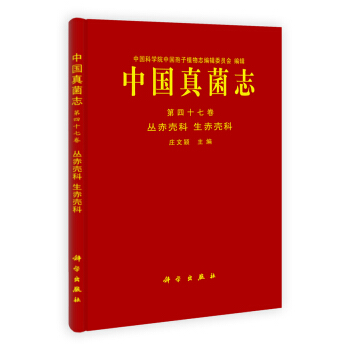

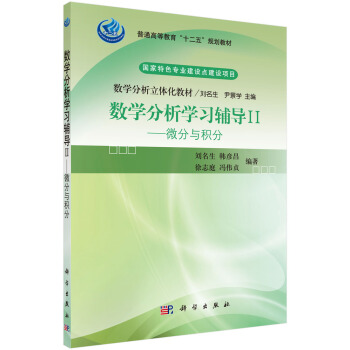
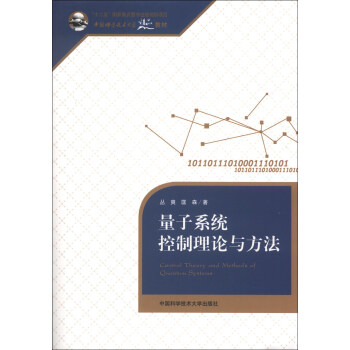
![Malliavi随机分析和相关论题(第2版) [The Malliavin Calculus and Related Topics] pdf epub mobi 电子书 下载](https://pic.windowsfront.com/11321057/rBEhVVI4VD0IAAAAAAKYSx5FYdAAADTRgLhwKwAAphj495.jpg)

![Springer数学研究生丛书:线性发展方程的单参数半群(英文版) [One-Parameter Semigroups for Linear Evolution Equations] pdf epub mobi 电子书 下载](https://pic.windowsfront.com/11327705/rBEhV1JXgzwIAAAAAANJNimt1WAAAEDDQKKGbwAA0lO002.jpg)
![城市公共安全学:原理与分析/高等院校安全与减灾管理系列教材 [Urban Public Safety:Principle and Analysis] pdf epub mobi 电子书 下载](https://pic.windowsfront.com/11359292/rBEhUlKVTggIAAAAAAD2CRdR-8gAAF-bQMoyFQAAPYh531.jpg)

![可压缩性和高速多相流动 [Compressible and High-Speed Multiphase Flows] pdf epub mobi 电子书 下载](https://pic.windowsfront.com/11412680/rBEhV1M6WPYIAAAAAAIncqAuqBgAALKRAE4Cy0AAieK725.jpg)




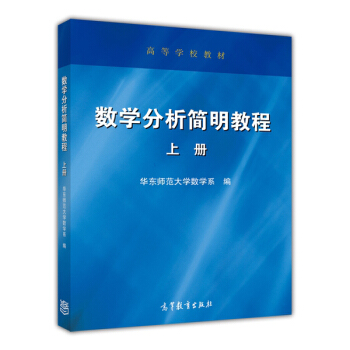


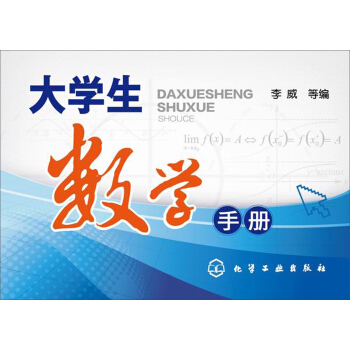
![工业生态学/国外高等院校环境类专业教材 [Industrial Ecology] pdf epub mobi 电子书 下载](https://pic.windowsfront.com/11562009/5450bc12N063ca45a.jpg)